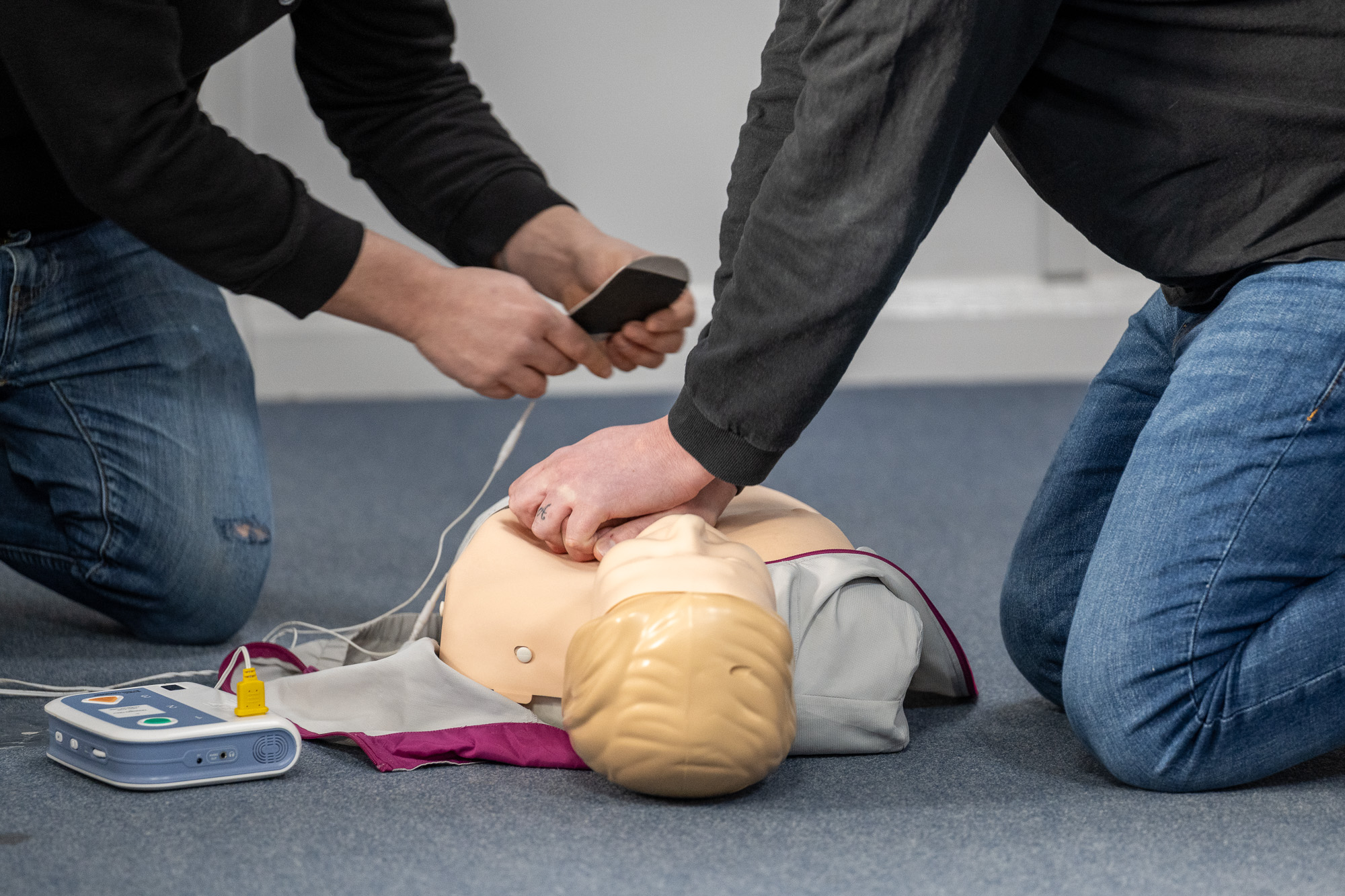
In the UK, ensuring the safety and well-being of employees and the general public is a top priority. When accidents or medical emergencies occur, having a proper understanding of First Aid At Work and Emergency First Aid is crucial. While both types of first aid aim to provide immediate care, they differ in context, application and training requirements.
First Aid At Work refers to the treatment provided to an employee who has suffered an injury or sudden illness while at the workplace. UK law, specifically Health Safety (First-Aid) Regulations 1981, mandates that employers assess the risks in their workplace and provide adequate first aid provisions. This might include training certain staff members, providing first aid kits, and setting up emergency procedures.
Workplace Risk Assessment:
Employers must conduct a risk assessment to determine what kind of First Aid provisions are necessary. This involves assessing the nature of the workplace, the numbers of employees and potential hazards.
Designated First Aiders:
The regulations recommend that the workplaces have designated First Aiders who are trained in First Aid At Work (FAW). The number of First Aiders required varies, so it is important to understand how many First Aiders you need. This training, typically a 2-day course, covers basic life support, handling injuries and managing minor to moderate medical conditions.
Workplace Medical Emergencies:
In the event of an injury (e.g. cuts, sprains, or fainting) or minor medical conditions, the First Aider steps in to manage the situation and decide whether further medical assistance is needed.
First Aid Kits:
Every workplace is required to have a well-stocked first aid kit that complies with UK Health and Safety regulations. The contents will vary depending on the type of workplace, but it should include essential items like bandages, plasters, and antiseptics.
Record-Keeping:
Employers must document any incidents that involve First Aid treatment, these records are essential for maintaining a safe environment and complying with health and safety laws.
First Aid for Specific Work Environments:
Different workplaces may have additional requirements. For instance, in higher-risk workplaces like construction sites or factories, the training may include more serious injuries, such as fractures or burns.
Emergency First Aid involves providing immediate care in life-threatening situations, typically in public settings or at home until professional medical assistance arrives. This includes situations like heart attacks, strokes, severe bleeding, or respiratory problems.
Severe Medical Emergencies:
Emergency First Aid is needed for situations where the individual’s life may be at risk such as a person suffering from a heart attack, stroke, major bleeding, or breathing difficulties. The priority is to stabilise the person and prevent further harm.
CPR and AED use:
One of the most vital aspects of emergency first aid is Cardiopulmonary Resuscitation (CPR), which is essential if someone is unresponsive and not breathing. The use of an Automated External Defibrillator (AED) may also be needed if the person’s heart has stopped.
Basic Training:
The Emergency First Aid At Work (EFAW) course provides basic skills to manage emergency situations. This 1-day course covers life saving techniques including CPR, dealing with choking, managing shock, and controlling bleeding.
Action Steps:
The first steps in any emergency include:
Assess the scene – Ensure that the environment is safe
Check the person’s condition – Determine whether the person is breathing, responsive or in need of immediate care
Call for help – Dial 999 for an ambulance, explaining the situation clearly and calmly
Perform First Aid – Administer first aid measures such as CPR or bleeding control until emergency services arrive.
Public Access to Emergency Training:
Emergency first aid training is available to the public, and many workplaces encourage employees to take this training as it can help situations beyond the office. Additionally, some organisations offer AED training, which is an important part of emergency first aid.
Setting - First Aid At Work is specific to a workplace environment and addresses the common injuries or health issues employees may encounter. Emergency First Aid is more general and applied to any emergency situation whether it’s at home, in public or elsewhere.
Scope of Care - First Aid At Work is generally concerned with less severe injuries or conditions that are common in the workplace. Emergency First Aid, however, deals with life threatening conditions such as cardiac arrest, severe bleeding, or respiratory failure
Training Requirements - The training for FAW is more comprehensive, often covering a wider range of injuries and illness, and lasts up to 3-days. EFAW is a shorter course (1-day) and focuses on the immediate response to critical situations like heart attacks or severe trauma.
Legal Requirements - Employers must comply with the Health and Safety (First-Aid) Regulations 1981 to provide appropriate first aid at work. Emergency First Aid however, is not required by law for most people but is highly recommended for the general public especially in workplaces.
First Aid Kit Contents - The contents of a Workplace First Aid Kit are tailored to the specific risks of that environment, while emergency first aid kits typically contain basic supplies such as bandages, plasters, and antiseptic wipes.
Both First Aid At Work and Emergency First Aid are essential skills that can save lives in critical situations. Understanding the distinctions between these two types of first aid ensures that you know how to respond appropriately in the workplace or any emergency. Whether you’re in the office, on a construction site or at home, having the right knowledge and training can make all the difference when it comes to providing effective care and ensuring a swift recovery for the injured or ill.
When it comes to ensuring safety and well-being in the workplace, Haswell Training offers a wide range of courses tailored to equip individuals and organisations with the knowledge and skills needed to respond effectively to emergencies. Whether you’re looking to meet legal requirements or simply improve safety standards, contact Haswell Training to find out about out comprehensive courses that can benefit both employers and employees.

About the author: Frances White
Frances White is a skilled training consultant at Haswell Training in Norwich, England. She specializes in designing and helping individuals and organizations achieve their learning goals.
View Frances White's full bioBook in a free meeting with our wellbeing lead who can visit you and your team in person or via M...
This page aims to provide you with some clarity and options to support you in making that step. ...
Those working in construction are nearly four times more likely to take their own life when compa...
Here we will explore what asbestos is, what a Category A Asbestos Awareness Course entails (https...
Our aim is to share a weekly blog exploring all things Haswell and training related.